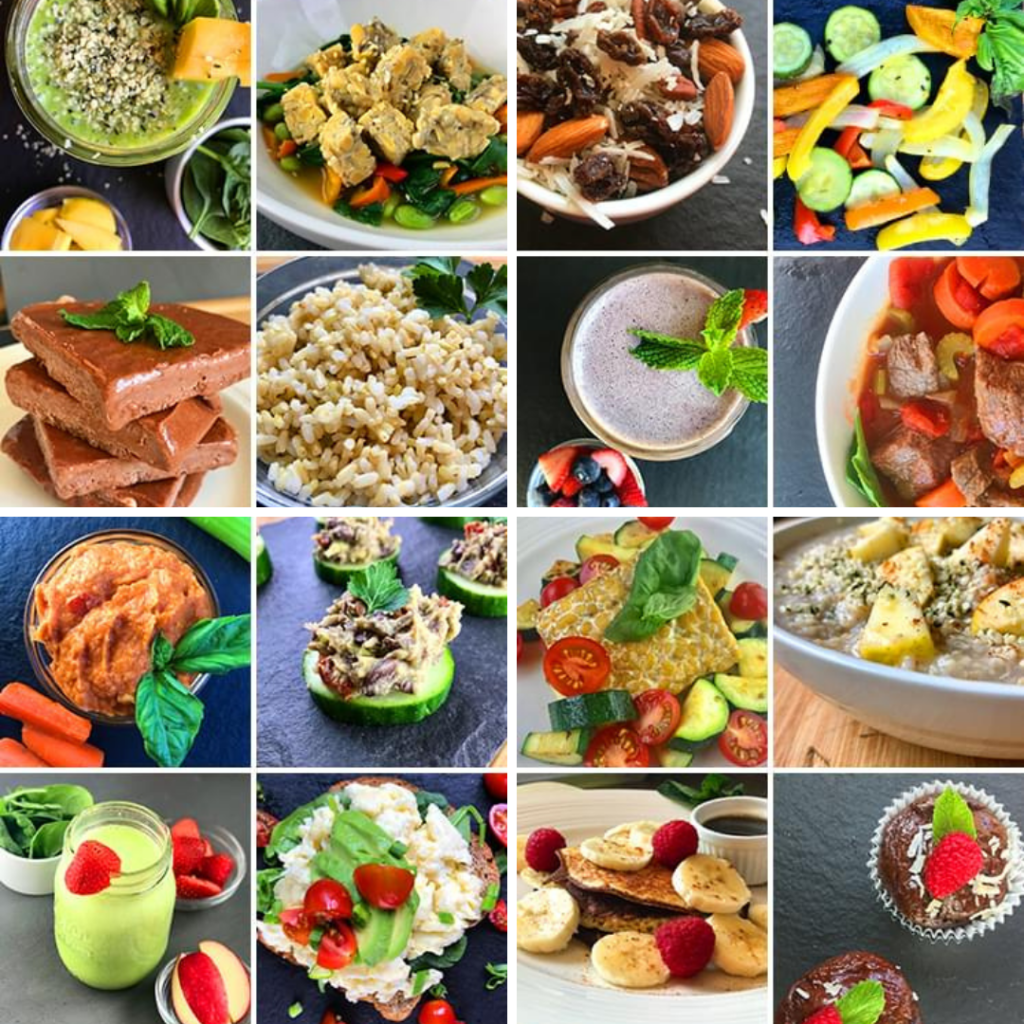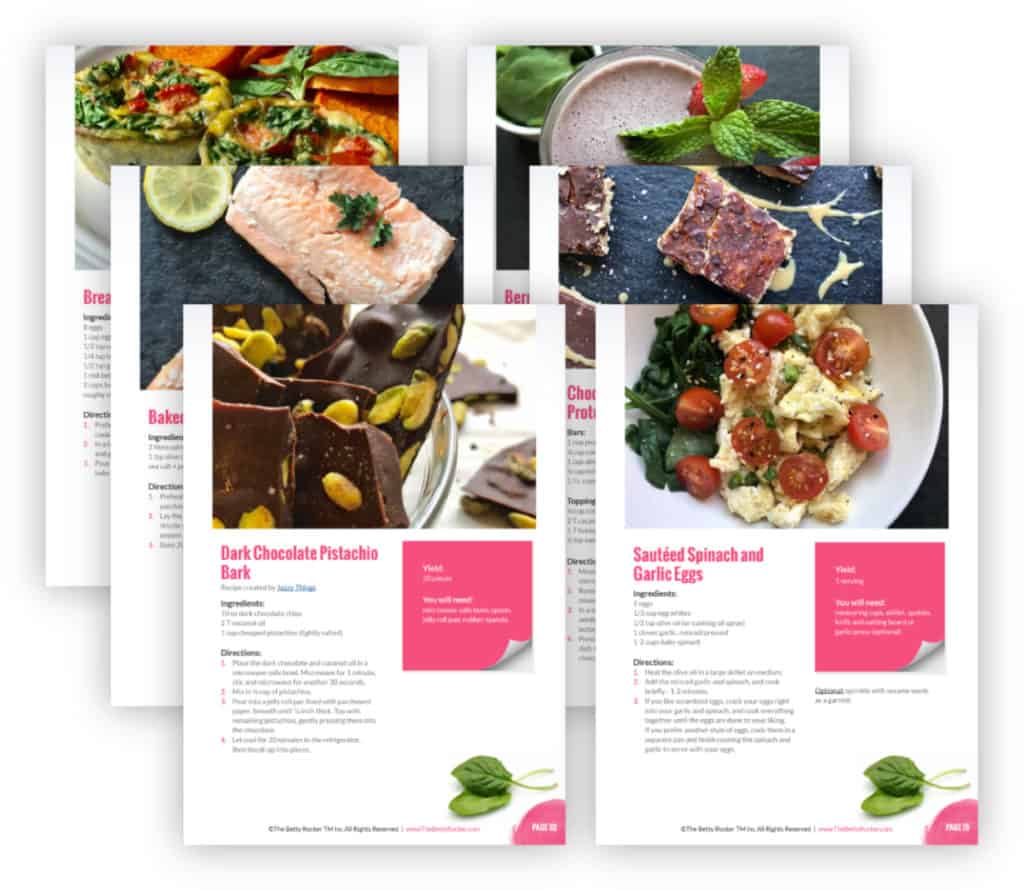 Will Eating Fat Make Me Fat?
Will Eating Fat Make Me Fat?
I hear this question so often that it’s clear to me how many people still fall victim to the old myth that eating foods that contain fat will add fat to their body. This is simply not how it works.
The truth is, we gain body fat for any number of reasons, including eating too much of the wrong foods, eating too much in general, not getting enough sleep, and living high-stress lives.
But including proper amounts of healthy fat into our diets is not one of those reasons.
In fact, fat as a nutrient is just as important for our body as protein, complex carbs, and greens.
The real story behind the modern epidemic of excess flab on our bodies comes from consuming so many processed and refined foods – they are EVERYWHERE in today’s modern Western diet, and they dull the body’s natural feedback loop that tells us when we’re full.
Without this very important line of communication, we keep eating and eating and eating, while our waistlines keep growing and growing and growing.
How Overeating Processed Foods Affects Our Body Fat
It’s not entirely our fault when we can’t stop eating processed foods.
Flavors are carefully engineered to be more appealing, compelling, and even addictive to consumers, but the nutrient density of foods is clearly weakened by processing.
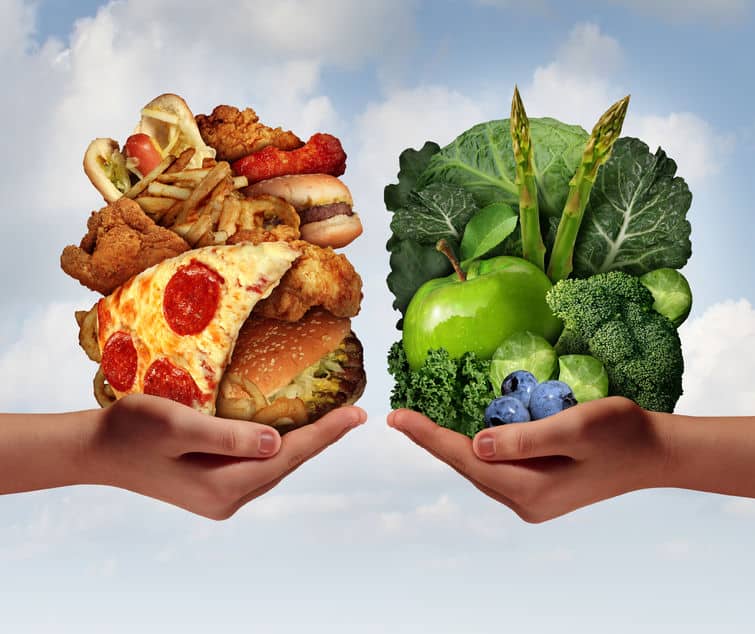
When foods are stripped of their natural fat, it’s almost always replaced with some form of sugar or salt – and it’s that excess sugar that overloads your body, and directly translates to excess body fat.
One of the biggest misunderstandings people have is thinking that eating foods that contain fat naturally (think whole eggs, avocado, quality salmon, nuts, olive oil) will make them, fat, but it actually will NOT.
It’s the sugar-laden, sodium-laced, highly processed foods that pad our waistline.
If you’ve ever examined the food label on a fat-free yogurt and compared it to a full-fat yogurt (if you can even find one), you’ll usually find that the fat-free yogurt contains more sugar and/or sodium than the full-fat version. That’s because the product simply doesn’t taste very good without the fat. Same thing with powdered peanut butter – the fat gets stripped out, and sugar gets added in to make it palatable.
This does you NO favors….as I talked about in the in-depth overview of carbs recently – over-consuming added sugar in your food is one of the primary culprits in weight gain.
Your body simply cannot utilize all the excess sugar – it doesn’t have the capacity to store it in your muscles or liver, and you don’t need it for energy – so it packages it up as body fat.
How Stress Affects Body Fat
Another reason we can’t seem to get the excess body fat to come off is stress.
Stress raises your levels of a hormone called cortisol. In its normal capacity, cortisol has several key roles in the body, but none more relevant to this discussion than its ability to raise blood glucose levels when it skyrockets due to stress.

When a stressful event or feeling is over and you still have high blood glucose levels, that glucose gets stored as fat. Most notably, BELLY FAT.
To avoid having this affect your waistline, find natural ways to reduce your stress. Simple breathing techniques, visualizations, gratitudes, mindfulness activities, yoga, and more can all be amazing stress relievers.
Consider your stress levels while you’re eating as well. Are you coming to the meal calm and unhurried, or anxious and rushed? It makes a difference. See if you can slow down your bites of food, or count how many times you chew your food. Breathe while you eat, and stop to notice how your food tastes. This can really affect the amount of cortisol that’s running through your system.
How Sleep Affects Body Fat
Yet another reason extra fat will cling to our bodies is a lack of proper rest.
When we sleep, our body processes the food we ate during the day, our mind processes events and thoughts, and our body is better able to maintain homeostasis.
Studies show that getting enough rest allows you to perform better, regulate your hormones so you actually metabolize fats more efficiently, reduce stress (helpful!), improve focus, creativity and memory, and regulates and reduces inflammation.

It can also throw off a number of other hormones like leptin and ghrelin, which help regulate appetite control.
So do your best to get enough rest – if you have trouble falling asleep, try using some of the suggestions that help lower stress levels from above. Try turning off your phone and electronics an hour or two before bedtime, and get deeper sleep by limiting all non-natural light sources in your sleep environment.
Can I Exercise my Fat off with Targeted Workouts?
Unfortunately, just doing ab or butt or arm workouts won’t magically melt the fat off those areas. The truth is, we can’t “spot reduce” fat – and I would caution you against supplements, cleanses or other quick fixes like body wraps that promise to do so.
Those are short-term strategies that carry the risk of long-term hormone imbalance, and they are incapable of providing real, sustainable results.
Good news though, you CAN get the fat off – and keep it off.
Fat comes off our body systemically (all over) in an order it went on – which is primarily governed by our DNA. We have different kinds of receptors in our fat tissues, essentially called alpha receptors and beta receptors.
The alpha receptors slow fat loss release, and beta receptors speed fat release. The stubborn fat areas have more alpha receptors, and simply will take a bit longer to come off than other areas of the body.
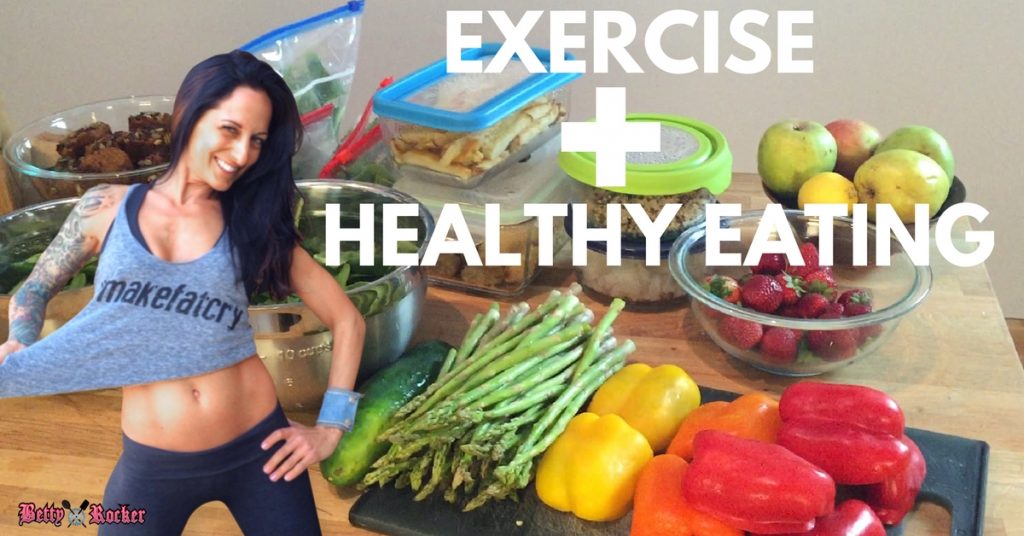
A training program that contains a combination of resistance and high-intensity interval training (like my Home Workout Domination program) with a balanced whole food diet including all the nutrients (like healthy fat) – is your ticket to getting and keeping your body in its optimal state.
5 Reasons We Need Body Fat:
Keep in mind that all human beings need some fat on their frames – it’s essential to our survival. Too little body fat is just as problematic as too much.
Here are the top 5 ways body fat is our friend:

Although the main source of energy for our bodies is carbohydrates, fat is used as a source of backup energy in cases when carbs are not available.
Fat, therefore, helps you stabilize your energy, providing both immediate bursts when necessary, and slow-release through extended periods of rest.
2. Your brain uses fat to function.
Structurally, 60% of our brain is composed of fat, which forms the structure of our cell membranes, so a steady, daily stream of fatty acids is required for your brain to properly develop and function.
Additionally, fat creates the structural components for myelin, a fatty insulating sheath that surrounds various nerve fibers, helping them carry messages more quickly.
3. Fat helps us regulate our body temperature.
There is a thin fat layer located right underneath the skin designed to insulate the body, helping us maintain the proper body temperature.
In addition to insulating, this layer of fat can also protect the inner core from extreme temperature changes by generating and then releasing heat when our skin temperature significantly drops.
4. Fat protects our internal organs.
The body also has a layer of fat surrounding major organs like the brain and heart, as well as nerves, tissues, and bones.
This layer is designed to act as a protective cushion in the event that you suddenly experience impact or even trauma, providing shock absorption around your essential organs, thereby decreasing the chance for significant damage.
5. Fat produces and regulates specifically helpful hormones.
Hormones are chemical messengers that regulate processes in our body. In response to signals from other organs, your body fat produces hormones that help with a variety of important functions, from blood clotting to sex hormone metabolism.
Too little (or too much) body fat and our hormones can get all out of whack, creating a whole host of unwanted issues.
5 Ways Eating Fat Keeps Us Lean:
Now that we’ve established why we need body fat, let’s look at how dietary fats play into the equation. There are actually some very compelling reasons to regularly include healthy fats into your diet.
In fact, here’s how eating the right amounts of the healthy fats will help you lean out.
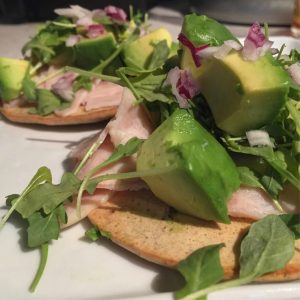
1. Some Vitamins your body loves and needs – like A, D, E, and K – need Fat in order to be useful.
If you don’t put enough fat in your diet, it’s not difficult to become deficient in one or more of these vitamins, and you don’t want that because they do some pretty important stuff!
Vitamin A is responsible for promoting good vision and keeping our eyes healthy; vitamin D helps us absorb calcium; vitamin E neutralizes free radicals, protecting cells in the process; and vitamin K is essential for blood clotting.
These are known as fat-soluble vitamins, which means fat must be present in order for them to be absorbed and processed by the body. Wholesome, healthy fats provide your body with the ability to do this by first shuttling and then dissolving the vitamins, micronutrients, and phytochemicals they supply into your body.
2. Eating fat promotes weight loss by curbing the tendency to overeat.
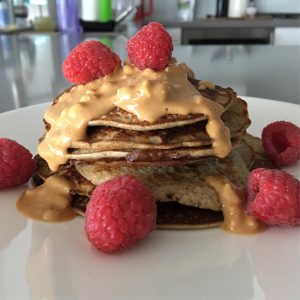
Healthy fat is very satiating, especially when paired with foods that don’t irritate your digestive system. This means you feel fuller faster, which means you are less likely to overeat! Combining a delicious grass-fed burger topped with avocado and a side of quinoa or baked sweet potato is far more satisfying and filling than some bread and jam.
You could eat an entire loaf of bread and not feel as satisfied as you would from the burger meal. Eating the balance of protein, carbohydrates, AND fat ensures you’ll be full enough to stop eating when you’re full.
3. Eating fat prevents weight gain by stabilizing blood sugar levels.
The consumption of fat before or with any carbohydrate meal slows the rate at which food exits your stomach.
This stabilizes blood sugar levels, preventing harmful insulin spikes that trigger fat storage and lead to weight gain.
(This is one of the reasons you want to avoid fat consumption immediately post-workout – more on that below!)
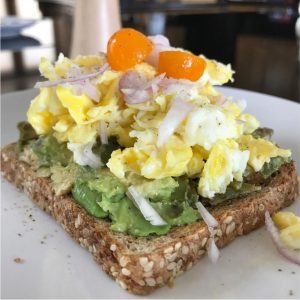
4. Eating regular amounts of fat gives you consistent energy for your workouts.
Along with glycogen (your body’s glucose stores), fat is burned during exercise to spare precious protein in your muscles.
It is also the primary fuel for the body at rest. When dietary fat levels drop too low, your body may actually start trying to hold onto body fat to protect you from starving. Don’t trigger that switch!
5. Eating the right kind of fat reduces inflammation in the body.
Inflammation caused by eating foods that irritate our systems or cause an allergic reaction will expedite weight gain, and lessen the effectiveness of leptin, the hormone that helps regulate food intake, maintain a healthy body weight, and ensure your metabolism is in top working order.
Healthy fats like Omega-3s help stimulates the production and secretion of leptin. They also reduce inflammation throughout the body, help prevent cancer cell growth, prevent excessive blood clotting, and inhibit thickening of the arteries.
By mindfully including more Omega-3 foods in our diet, we can trigger the body to lose unnecessary weight and keep it off, while benefiting from all the other nutrients in those foods as well. Focus on the foods from the lists below and you’ll support all of your body’s natural fat regulation processes!
Good sources of Omega-3:
- flaxseed
- cod liver oil
- walnuts
- soybeans
- sardines
- oysters
- salmon
- mackerel
What Kind of Fat Should I Limit or Avoid in my Diet?
On the other end of the dietary fat spectrum are saturated and trans fats.
Saturated Fats
Saturated fat occurs naturally in many foods such as meat, dairy products, palm and coconut oils, and cocoa butter. Despite its reputation, including naturally-occurring saturated fat in moderation into our diet is not bad for us.
This does not mean that you should just start eating saturated fat with abandon, especially if you’re trying to lose a significant amount of weight. Again, moderation is key.
Get most of your dietary fat from the Omegas we talked about above, a minimal amount from Saturated Fats, and steer as clear as possible from Trans Fats (below), and you’ll be right on track.
Trans Fats
Trans-fatty acids also subject us to inflammation and contribute to free radical formation. You’ve heard of free radicals before I’m sure, and how eating antioxidant-rich foods like leafy greens, berries, beans, and spices protects you from their potentially harmful effects.
A diet that contains a lot of trans fats is very unlikely to contain many of those antioxidant-rich foods, and will raise your bad (LDL) cholesterol levels while lowering your good (HDL) cholesterol levels. This can raise blood pressure and harden the arteries, increasing the risk of stroke and heart attack.
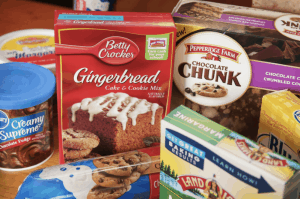
An easy way to find out if the food you’re eating has trans-fat is to simply check the ingredients label for the word hydrogenated or partially hydrogenated oil. #themoreyouknow
How Much Healthy Fat do I Need to Eat?
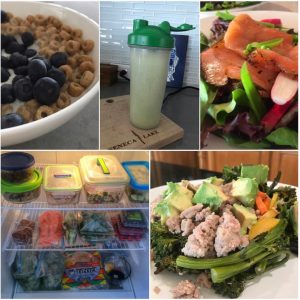
The amount of fat you need each day depends on your daily nutritional needs, which are of course based on your size and activity level. As a general rule of thumb, aim for 20-35% of your total daily intake to come from fat.
Speaking of “rule of THUMB” I measure my fat in meals by eyeballing the portion of fat to the size of my thumb. I go for the smaller side if the food is in a liquid form (oil) and a little larger when it’s in solid form (peanut butter, nuts, avocado).
Balance is key in fat consumption; eating enough of the good stuff (nuts, avocados, flax, salmon, etc.) promotes weight loss and weight maintenance. Eating too much of the bad stuff (ice cream, cake, pastries, pizza, etc.) promotes weight gain. Focus on emphasizing whole food fat sources.
When Should I Eat Healthy Fat?
I purposely include some healthy fat with almost every meal and snack and it is NOT making me fat – it’s helping me stay full and satisfied so I don’t overeat and don’t end up having cravings for more food later. It’s easy to do, and healthy fat is present in many of the wholesome recipes in my meal plans.
A Typical Day of Betty Rocker Meals
Each nutrient is labeled so you can see where the fat is included.
Fat = F; Carbs = C; Protein = P; Greens/veggies = G*
- M1: Scrambled Eggs (P+F) + sauteed spinach and garlic (G) + avocado (F)
- M2: Homemade Chicken Vegetable Soup (P, G) with Slice of Ezekial Sprouted Grain bread, toasted (C) + grass fed butter (F)
- WORKOUT
- M3: Green Smoothie with unsweetened Almond Milk (some F), Protein Powder (P), ½ Banana + ¼ cup sprouted grain cereal (C), Mixed Greens (G)
- M4: Roasted Turkey Breast (P), sauteed green beans and garlic (G) pecans (F)
*Some vegetables will be labeled as a Carb instead, especially starchier vegetables, like a sweet potato. Check back in with the carbohydrate and protein articles for additional food sources for each nutrient.
Get some great recipe and meal ideas and see what I eat and why in this video.
Betty Rocker’s Favorites: Healthy Fat Sources
Use this list to get you started and as an “including but not limited to” type of guideline while discovering YOUR favorite sources of healthy fats.
Nuts and seeds: Walnuts, almonds, Brazil nuts, pecans, cashews, pistachios, flax seeds, sesame seeds, hemp seeds, chia seeds, pine nuts, pumpkin seeds, filberts
- Dairy: Butter, Greek yogurt, ghee, some cheeses
- From the Farm: Eggs, grass-fed meats, organic and farm-raised poultry, liver, goat butter
- Plants: Avocado, olives, coconut, peanuts, peanut butter, soybeans
- Fish: salmon, mackerel, albacore tuna, herring, lake trout, cod liver oil, sardines, bluefish
- Oils*: olive oil, walnut oil, sesame oil, avocado oil, peanut oil, grapeseed oil, sunflower oil
*A note on buying oils: I recommend buying them in containers that are made of colored glass or non-see-through to prevent the oxidative effects of light exposure. Look for things on the label that tell you about the processing, like unrefined, unfiltered, cold pressed and organic – and avoid labels with hydrogenated, partially hydrogenated, and refined as much as possible.
Find these (and more!) deliciously balanced recipes on the blog right now:
- Tuna Avocado Salad
- Chocolate Peanut Butter Protein French Toast
- Baked Salmon with Grainy Mustard, Parsley and Sliced Shallots
- White Chia Grapefruit Ginger Cups
The Bottom Line: Eating Good Fat Keeps You Healthy and Lean
Eating a variety of dietary fat with an emphasis on the Omega-3s will not only regulate all your essential cellular functions, it will keep you lean as well.
I hope this article has shown you there is nothing to fear about fat. In fact, we’ve discovered quite the opposite is true – adding steady doses of healthy fats to your diet will help you be stronger, leaner, healthier and more confident than ever that the food choices you’re making are promoting a long, rich life in your best body – which of course is what being a Betty Rocker is all about!
Need some help with healthy eating? When planning for the week, I think about:
- 2-3 breakfast options I like
- A few entrees that could double as dinner or lunch
- A couple smoothie ideas that have complimentary ingredients to give you variety with your greens
- A snack option like homemade protein muffins or an easy to make trail mix for days you’re just hungrier and want a little more to eat.
- Round out your plan with a couple of staple sides that you would like to have on hand daily like a big mixed greens salad and some rice, quinoa or easy to grab sweet potato chunks…
……and then make your grocery list around that.
Or, you can let me make the whole plan for you, with so many delicious, easy and healthy recipes!
The 30 Day Challenge Meal Plan includes all the recipes and grocery lists for breakfasts, smoothies, sides, snacks and entrees for 4 full weeks – with plenty of delicious options and structure to help you eat right for YOUR life!
Check out everything included in the 30 Day Challenge Meal Plan right here, and let me make your life easier!
- Coleman, Erica. “Ideally How Many Grams of Fat Should You Consume Daily.” SF Gate: Healthy Eating. Web. http://healthyeating.sfgate.com/ideally-many-grams-fat-should-consume-daily-5501.html
- “Dietary Fats.” American Heart Association. March 24, 2017. https://healthyforgood.heart.org/eat-smart/articles/dietary-fats
- Donga, E., et al. “A single night of partial sleep deprivation induces insulin resistance in multiple metabolic pathways in healthy subjects.” J Clin End & Metab, 2010; doi: 10.1210/jc.2009-2430.
- Horman, T., and Leary, F. “Neuroscience of Reward: Implications for Food Addiction and Nutrition Policy.” Journal of Nutrition and Food Sciences. November 30, 2016. Web. https://www.omicsonline.org/open-access/neuroscience-of-reward-implications-for-food-addiction-and-nutrition-policy-2155-9600-1000569.php?aid=82431
- Moyer, A.E., et al. “Stress-induced cortisol response and fat distribution in women.” U.S. National Library of Medicine. May 1994. Web. https://www.ncbi.nlm.nih.gov/pubmed/16353426
- “Omega 3 : Omega 6 balance.” GB Healthwatch. Web. http://www.gbhealthwatch.com/Science-Omega3-Omega6.php
- Schulte, Erica M., et al. “Which Which Foods May Be Addictive? The Roles of Processing, Fat Content, and Glycemic Load” PLOS ONE. February 18, 2015. Web. http://journals.plos.org/plosone/article?id=10.1371/journal.pone.0117959
- “The truth about fats: the good, the bad, and the in-between.” Harvard Health Publications. February 2015. Web. http://www.health.harvard.edu/staying-healthy/the-truth-about-fats-bad-and-good
- Wolfram, Taylor. “Choose Healthy Fats.” Eat Right: Academy of Nutrition and Dietetics. March 6, 2017. Web. http://www.eatright.org/resource/food/nutrition/dietary-guidelines-and-myplate/choose-healthy-fats
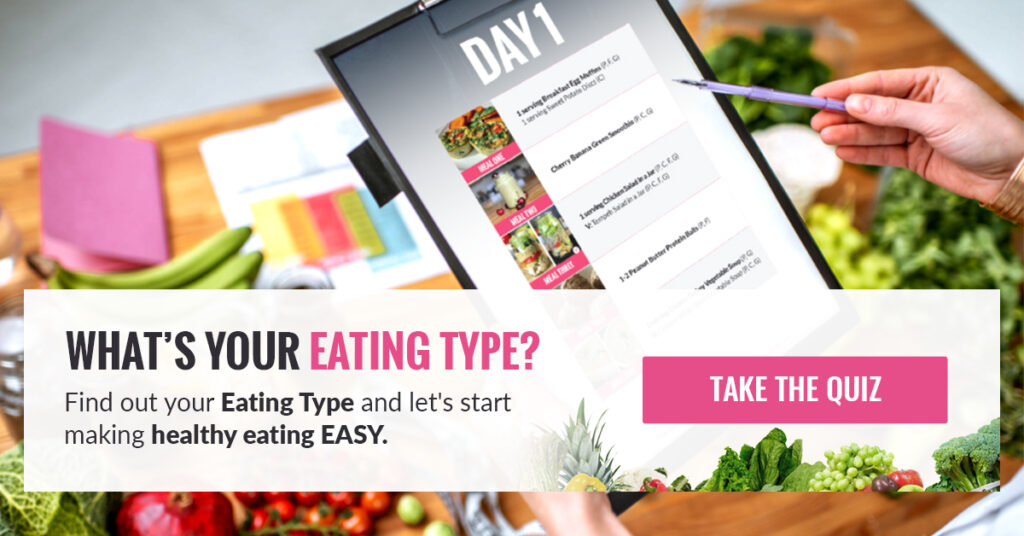

 Nuts and seeds: Walnuts,
Nuts and seeds: Walnuts, 